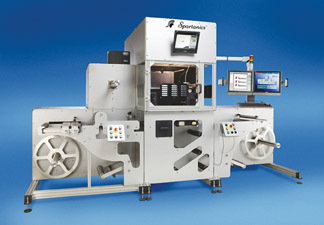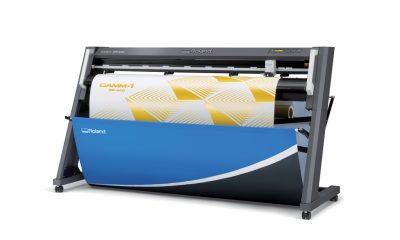Graphics Printing
Published
20 years agoon
A recurrent theme in the columns we present is that shops must strive to bring consistency, quality, and efficiency to their work by applying best practices in all phases of print production. These best practices are achieved by combining standardized procedures with the appropriate tools for the application at hand.
During a recent consulting job, we decided to see if employees in the client’s shop understood the goal of standardization. So we assembled the employees and asked the group the following question: “What three words are the keys to successful printing?” The answer was supposed to be, “Reducing the variables,” and all but one of the shop’s employees answered with these words or words that were similar. The exception was a novice printer, whose response was, “Do it again.” His response did not please the shop’s supervisor.
Novice printers aren’t the only ones who fail to see the value of carefully controlled printing procedures. At another shop, we once heard an experienced printer lament, “If only they would just let us get on and print. But instead, they insist on having us match a proof!”
In both cases, the employee ignored the fact that best practices, whether they are used to reduce variables or verify the effectiveness of the printing process, are there to make print production easier. This month, we will focus on one area of a printing operation in which many printers fail to apply best practices–the drying or curing process. Specifically, we’ll look at the factors a shop must consider and control when selecting and using dryers.
Where to start
Dryer and curing-system designs have improved significantly in recent years. But there are still enough differences among brands, models, and machine styles to warrant careful consideration of your needs. You should begin by asking yourself, “What ink or medium am I printing?” Next ask, “What is the substrate?” Finally, ask “What machine can I buy that will accommodate the inks and substrates I’m using?” But all too often, this last question is the first that printers ask, and they end up with curing units that aren’t suited to the applications for which they will be used.
At the opposite end of the spectrum are those shops that decide to upgrade some other element of their production process and fail to consider the impact of that change on their curing needs. We had two clients during the past year that didn’t consider their curing systems at all when they decided to upgrade their printing equipment. In both cases, the shops discovered that their dryers were inadequate to match the print rates of their presses, so the dryers created severe bottlenecks in production. Both shops were forced to add to their new press expenses with the additional costs of unplanned upgrades to their curing equipment–in one case to the tune of $1.5 million. If they had considered their curing capabilities first, they could have made a coordinated upgrade to both printing and curing equipment at a substantially lower cost.
Before you invest in new drying or curing equipment, make sure you’ve considered all of the following factors:
1. What are the drying/curing characteristics of the ink system?
2. Is the substrate heat or UV sensitive?
3. What is the desired production rate?
4. How big is the substrate?
5. What condition must the ink and substrate be in when the printed item leaves the dryer or curing unit?
6. What power supply is available?
7. Is gas an option?
8. Is ventilation an issue?
9. How much space is available?
10. What level of dryer-operating cost can the business support?
11. What is the capital cost of the equipment?
Ink considerations
The ink type(s) you print will help you narrow your search for the appropriate drying system. If you work with conventional solvent-based or water-based inks, you’ll need a system that uses heat (either electric or gas), and possibly forced air, to evaporate the solvents or water from the ink. Or you may be using UV-curable inks that “dry” by polymerization when the ink film is exposed to UV light of the appropriate wavelength.
In UV curing, short-wave UV starts the cure at the surface of the film, while longer wavelengths penetrate deeper into the ink. But the curing process also continues for some time after the prints have been exposed to UV light in a curing unit. The inks may seem dry, but they will generally require several hours to develop a complete cure, and with some ink systems, as much as a week.
UV ink systems themselves fall into two categories: those that rely on free-radical photoinitiation and those that use cationic photoinitiation. Theoretically, free-radical photoinitiation stops as soon as exposure to UV light is cut off. But in practice, these inks continue to alter after UV exposure in the curing system and achieve a complete cure during the following 12-24 hr. Free-radical systems are difficult to cure in the presence of oxygen and benefit from curing in an inert environment containing nitrogen.
Cationic photoinitiation produces chemical changes that allow the curing process to continue for some time after the ink has received an initial dose of UV light. Curing of cationic inks is not hindered by the presence of oxygen, hence these ink types are the most prevalent in screen shops. Cationic ink systems are generally much more robust than free-radical systems, but they must not be subjected to high levels of humidity prior to curing because this will prevent them from achieving a complete cure.
Substrates
The drying system needs to be able to accommodate the substrate sizes you will be printing. It also has to be able to dry or cure prints on those substrates at a speed that will accommodate your desired press rates. You need to make sure the drying system will preserve the substrate. In other words, the ink should be dried or cured to an acceptable level without resulting in adverse reactions to the substrate, such as shrinking, warping, and discoloration.
System characteristics
Shops that require electric or gas dryers to dry solvent and water-based inks must consider the size of the dryer they will need to meet their production goals. Conveyorized dryers are generally modular in design and many feature more than one drying chamber. These drying modules may each be 6-8 ft in length. It is not unusual to have two or three drying modules with a “chiller” module to keep the substrate from overheating. Add to this the extra belt length at the loading and unloading ends of the dryer, and you can have a system that is easily 30-40 ft long. In general, the faster the presses in the shop, the longer the dryer that will be required.
Heat also can be an advantage with UV-curing units because it assists in the curing mechanism and can improve the final properties of the cured ink film. In high-speed production lines, UV ink is often dried so quickly after printing that the ink film retains mesh marks because the ink had insufficient time to flow out. The way to overcome this condition is to subject the printed ink film to medium- or long-wave infrared heat before it passes under the UV-curing lamps. This heat energy reduces the viscosity of the ink film and enables it to flow out.
For those who print solvent-based inks, proper ventilation is essential. And even though UV ink contains no solvent, ventilation also is an important component of UV-curing systems. Extracting air from the curing chamber helps keep the bulbs cool and removes ozone from the system. More importantly, air extraction will remove any uncured monomers that migrate from the ink film into the air. This will protect employees who may be allergic to these monomers and will prevent the monomers from collecting on the curing system’s reflectors, which reduces curing efficiency.
Printers who wish to expand their curing capabilities may want to consider purchasing a used, rather than a new, dryer. Some used dryers are excellent buys. However, older models can be grossly inefficient and use far more energy than new systems. It’s never a bad idea to compare the price and operating costs of a new dryer with the costs of comparable used system, but make sure the costs are accurate or you may get burned.
With UV dryers, remember that the bulbs have limited life. Once a UV bulb reaches 1000 hr of operation, its effectiveness begins to become compromised. By this time, the bulb’s UV output degrades substantially, while its infra-red (heat) output increases. Check with your bulb supplier to get recommendations about how frequently your curing-system bulbs should be replaced.
If the unit is in nearly constant use, lamp condition should be checked at least once a week using a radiometer that measures peak irradiance. During this checkup, the bulb and reflectors should be cleaned with isopropyl alcohol. Make sure to not handle the bulbs with bare hands–the oils in your skin will contaminate the quartz encasement of the bulb and cause premature failure when the bulb gets hot. The reflectors are responsible for up to 70% of the UV energy reaching the ink film, so keeping them clean is key for maintaining curing efficiency.
The condition of the dryer belt also is very important. A frayed or damaged belt can create contamination that will end up in the wet ink film of your prints. Dirt, dust, and debris of any kind should not be allowed to build up inside the dryer, not only because prints may become contaminated, but also because the dirt will reduce the dryer’s efficiency and potentially increase the risk of fire or damage to the system.
Sensible selection
Selecting a dryer as an afterthought will almost always leave you with a system that is inappropriate for your needs. But with a careful consideration of your applications and production goals, you can find a drying or curing device that will enhance productivity in your operation, in some cases by as much as 50%! And once you have that perfect dryer, make sure to maintain and monitor the system regularly to ensure years of high-quality performance.

Subscribe

Magazine
Get the most important news
and business ideas from Screenprinting Magazine.
Most Popular
-

 Case Studies2 months ago
Case Studies2 months agoHigh-Density Inks Help Specialty Printing Take Center Stage
-

 Art, Ad, or Alchemy2 months ago
Art, Ad, or Alchemy2 months agoF&I Printing Is Everywhere!
-

 Andy MacDougall2 months ago
Andy MacDougall2 months agoFunctional and Industrial Printing is EVERYWHERE!
-

 Columns3 weeks ago
Columns3 weeks ago8 Marketing Mistakes Not to Make When Promoting Your Screen Printing Services Online
-

 Editor's Note3 weeks ago
Editor's Note3 weeks agoLivin’ the High Life
-

 Marshall Atkinson3 weeks ago
Marshall Atkinson3 weeks agoHow to Create a Winning Culture in Your Screen-Printing Business
-

 Thomas Trimingham2 months ago
Thomas Trimingham2 months ago“Magic” Marketing for Screen Printing Shops
-

 Case Studies3 weeks ago
Case Studies3 weeks agoScreen Printing for Texture and Depth






